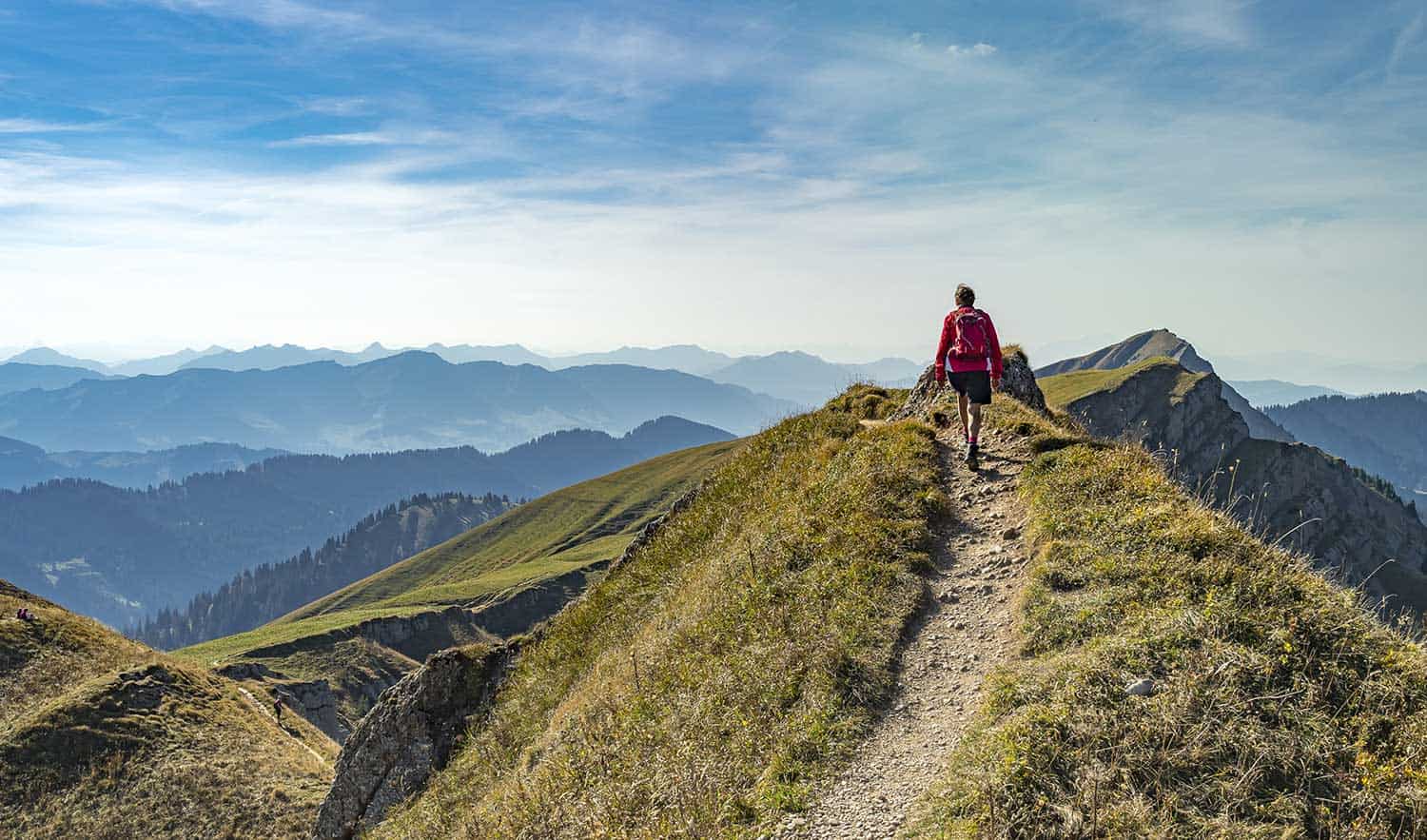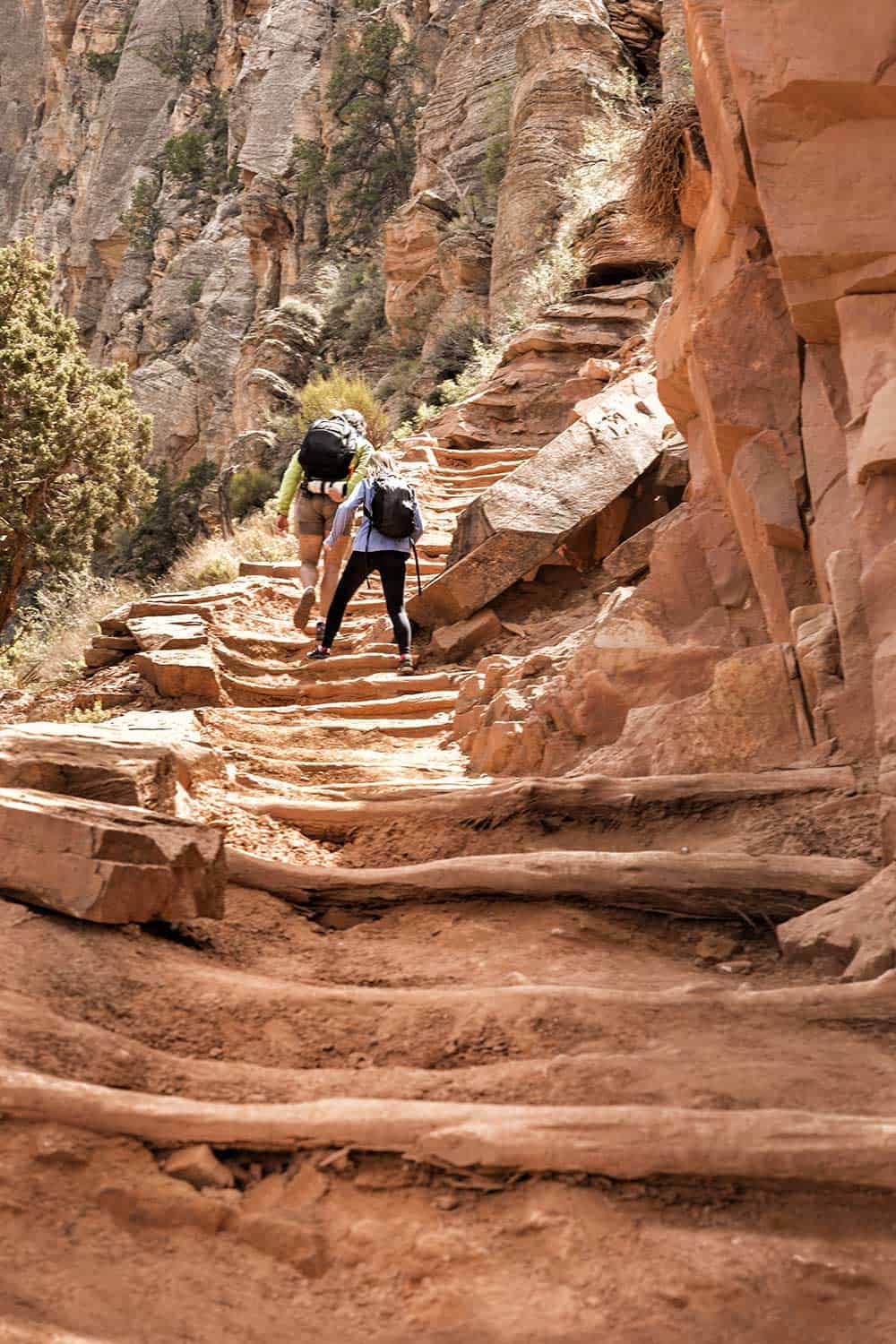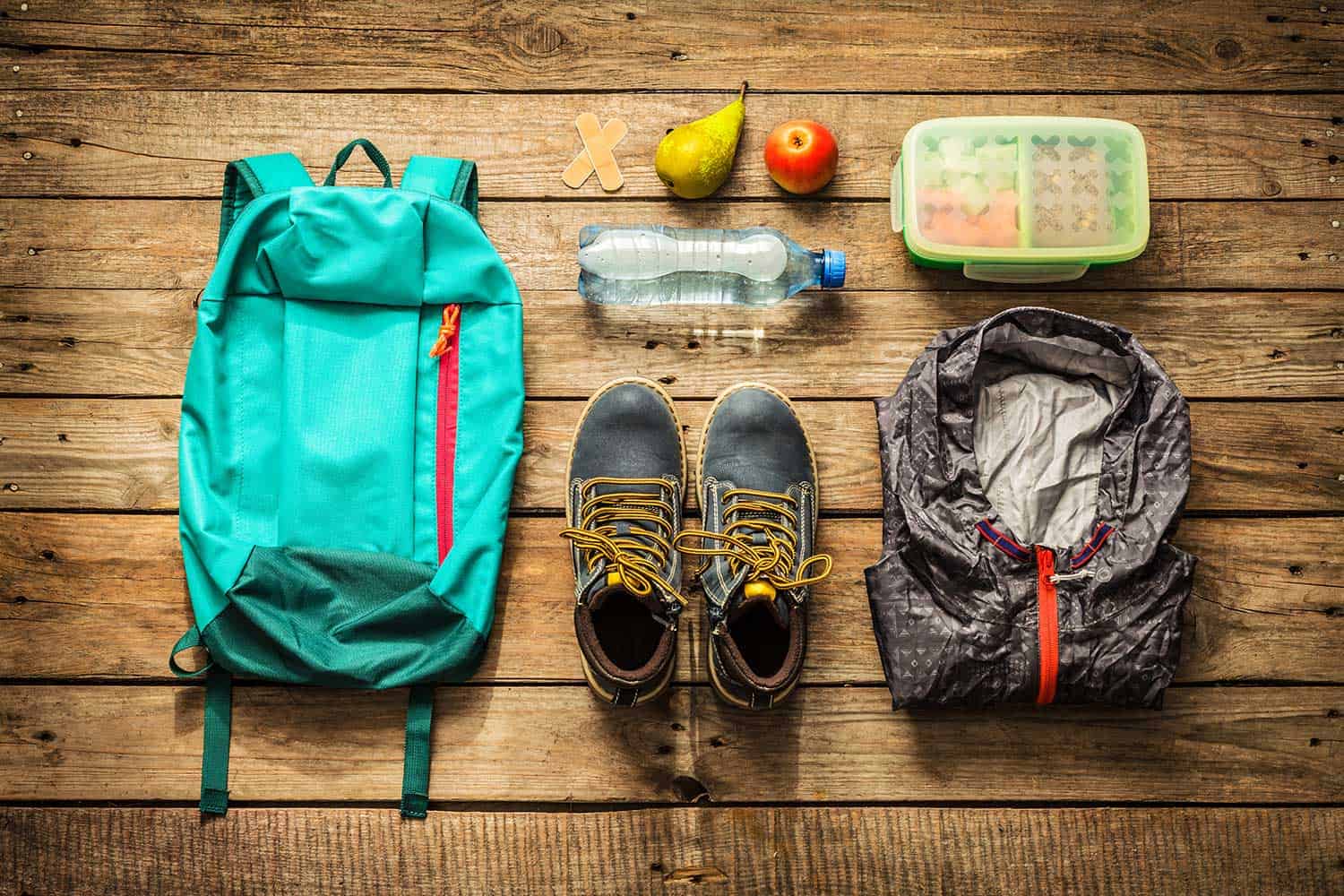Hiking is an excellent exercise, as well as an opportunity to explores the beauty and majesty that the natural world provides. If you are planning on a multi-day or thru-hike, you will need to determine how far you will hike a day to plan for supplies and reach campsites on time. Having a good estimate can make the difference between having enough food or running short. We have researched this to help you understand the average distance most hikers can complete in a day and the elements that can impact whether this is realistic for your journey.
The average person hikes at a speed of between 2 and 3.5 miles per hour, depending on the level of fitness and the terrain. If you could keep this rate up for 8 hours without stops, then you could expect to cover 16 to 28 miles per day. 10 to 16 miles per day is typical for most travelers, though, taking into account varying terrain and rest breaks.
From trail difficulty to one's physical abilities, many aspects can affect the number of miles that you can complete in a day. Keep reading for all the details!
![Hikers walking on a hiking trail in mountains, How Far Should I Hike In a Day? [Typical Numbers Revealed]](https://fitseer.com/wp-content/uploads/2020/11/How-Far-Should-I-Hike-In-A-Day.jpg)
How Far Should I Hike in a Day?

When trying to determine your mileage goal, you need to take several things into account. These are your fitness level, the difficulty of the trail, the trail elevation, and whether you are backpacking or trail hiking.
Fitness Level
Of course, your overall physical condition will impact the number of miles that you can complete in a day. If you are generally fit and active, you will be able to cover more ground than if you lead a generally sedentary lifestyle. You will need to take your time, with more rest stops. If you plan on a long-term or thru-hike, it would be a good idea to take some time to get into better shape. The better condition you are in physically, not only will you be able to make better time, but you are less likely to injure yourself or have to quit partway through your hike.
Difficulty of the Trail

Knowing the difficulty level of the trail is important when determining how many miles you will accomplish in a day. Obviously, if you are trekking across flat land with a clearly defined trail in good weather, you can cover more ground than clambering up steep and treacherous inclines in the snow.
Trail Elevation
The elevation can impact your progress as well. The higher up you go, the harder your body has to work to take in oxygen and distribute it through the body. If you are hiking up a high mountain, it is important to go slow and take frequent rests to acclimate to the elevation change. Like Mt. Everest, some extreme mountains require trekkers to camp for hours or even days at a set elevation stage so they can get used to it before moving on. If you proceed too quickly, you can become light-headed or pass out from lack of oxygen and injure yourself!
Backpacking or Trail Hiking
The type of hiking you are doing makes a difference, as well. If you are trail hiking, you will likely be carrying just a small pack with essential gear for a day trip. Backpacking, however, is a totally different animal. Backpackers travel for long distances, essentially carrying their homes on their backs. These packs can be very heavy, depending on what the hiker decides is necessary to their trip, which can slow them down with their weight.
How to determine hiking difficulty?

There are a few different ways to determine the difficulty rating of a trail. Typically, trails are rated easy, Moderate, Moderately Strenuous, Strenuous, and Very Strenuous.
Shenandoah National Forest calculates theirs using a formula: elevation gain x 2 x distance (in miles). The number is correlated with a difficulty level and have an average completion rate:
- Easiest: less than 50, 1.5 miles per hour
- Moderate: 50-100, 1.4 miles per hour
- Moderately Strenuous: 100-150, 1.3 miles per hour
- Strenuous: 150-200, 1.2 miles per hour
- Very Strenuous: greater than 200, 1.2 miles per hour
You can also use a hike difficulty calculator to help you figure out what to expect by using the trail length and the elevation to score a trail easy to extreme. (Trail length/elevation). These classifications are similar to the ones used above:
- 0-7 Easy: Suitable for everyone
- 8- 13 Moderate: Increased mileage, should be in good hiking condition, the trail is in good condition
- 14- 18 Challenging: Significant elevation gain, trails are in good shape, the hiker should be in good shape
- 19-23 Difficult: Hiker should be in very good condition; trails are longer and increasing elevation
- 24-27 Very Difficult: Hiker should be in excellent condition, trails are longer and not well maintained, and increase elevation.
- 28+ Extreme: Hiker must be in exceptional condition, trails may not exist, extreme elevation gain
What is considered long-distance hiking?
There is no specific definition that spells out what is considered a long-distance hike, but a backpacking trip that lasts more than a week but usually is multiple weeks or even months is considered long-distance.
What is the best time of day to hike?
Most people prefer to hike early in the morning or in the evenings to avoid the hottest part of the day. Another bonus to starting early is that it gives you plenty of time to finish your trail without worrying about getting caught in the dark.
How long would a 7-mile hike take?
Based on the calculations above, a seven-mile hike would take between 4.5 hours at 1.5 miles per hour and 5.83 hours at 1.2 miles per hour, depending on the trail difficulty.
How do I hike without getting tired?
Getting tired during a hike can really ruin your day! Thankfully, there are a few tried and true steps you can take to help you keep your energy up!
- Get in shape! Regular exercise, including cardio, will get you started on the right foot.
- Invest in supportive and comfortable footwear appropriate for hiking.
- Dress appropriately for the location and the weather. Getting too hot or freezing can really drain your body's reserves.
- Stay hydrated. Be sure to drink plenty of water before and after your hike. Add a beverage with electrolytes into the mix, especially if you are sweating a lot.
- Bring healthy, high-energy snacks like trail mix to snack on as you go. Hiking burns a ton of calories, so make sure you stayed fueled.
- Pace yourself. Hiking is about enjoying nature, not a race to the finish line.
- Use a walking stick. Giving your body a little extra support, especially when climbing or descending long hills, can give your legs and knees a much-needed boost!
For more details on these steps, check out our post, "How to Hike Without Getting Tired."
Can I build endurance for hiking?
Of course, you can! There are a lot of exercises that can help you to build your strength and endurance.
Hiking
The best way to get into shape for hiking is to hike! Start small, and work your way up to longer, harder treks as your endurance grows. The more you do it, the stronger your endurance will become.
Cardio
If you can't hit the woods as often as you would like, cardio is a great way to build your endurance. Most treadmills and ellipticals have interval settings that can mimic hiking, which can also help build the strength in your leg muscles that you need. You can also run, walk, or bike; any kind of cardio is good that gets your heart rate up and improves your ability to take in and use oxygen.
Strength Training
Hiking can be very strenuous, especially for more difficult trails or longer treks. Strength training builds endurance in the muscles you use to climb those tough mountain trails and clamber through rocky passes. A few good exercises to include are :
- Squats and Lunges
- Push ups
- Step ups
- Crunches
- Goblet Squats
- Stairmaster
Be sure to stretch, or even add yoga into the mix to help increase flexibility.
How should I prepare the night before hiking?

The level of preparation you need to take the night before a hike is determined by what kind of hiking you will be doing, but the key steps are the same whether you are doing a day-long trail hike or starting on a multi-month thru-hike.
Eat a healthy well-balanced meal, with plenty of complex carbohydrates.
These will give you the energy you need to get off to a good start first thing in the morning. Be sure to have a good breakfast before you head out, too, especially if it might be a while before you get to sit at a table again.
Hydrate, hydrate, hydrate
Make sure that your body is well-hydrated the night before. Proper hydration can make or break your trip, and it is especially key for long-distance hikes, as you might have difficulty finding adequate resources along the trail. People have died from dehydration, so drink plenty in the days before your trip.
Get plenty of sleep.
You are going to be working your body hard, so being well-rested is critical. This may even be your last chance to rest in a nice cushy bed for a while, so take advantage!
Lay Out Your Clothes
This step will ensure that you have everything you need and can get going without wasting time looking for your favorite socks!
Pack Your Pack
Preparation is crucial to your safety and well-being. Take a last-minute inventory and pack carefully, so you know that you have everything you need to survive your journey. Even if you are going for a day hike, you need to make sure that you are prepared to stay out overnight, if need be. Prepare for the worst, and hope for the best.
Tell Someone Where You Are Going
In case you have not already done so, be sure to let someone know where you are going and when you can be expected to be back, or at least make contact.
In Summary
Many aspects can impact the duration of a hike, from physical fitness to trail difficulty. Understanding these and having a good estimation of how far you can trek in a day is a critical part of the planning process. If you know how long your trip will take, you can determine what supplies you will need, and your loved ones will know when to start looking for your return. This timing can affect your safety and well-being, so be honest with yourself, and stay safe!
To learn more about hiking, check out this post on Fitseer.com!


![Read more about the article At What Age Can You Start Surfing? [And At What Age Should You Stop?]](https://fitseer.com/wp-content/uploads/2020/11/A-surfer-wearing-a-white-shirt-and-aloha-pants-riding-the-waves-of-a-blue-ocean-500x333.jpg)



